Editor’s note: The following article/review originally appeared on WUS. It is a hands-on look at a rare watch that we’ve been interested in some time. Damasko is known for their metals and engineering, but they happen to also be one of the few manufacturers of in-house movements available under $5k. The article was written by Brett of Timeless Luxury Watches, which is a retailer of Damasko. This is neither a sponsored post or an advertorial, merely a guest post.
Today I get to review two watches, and one movement, that I’ve been dying to see in person for a very long time. Those watches are the Damasko DK14 and DK15, and the movement is their extraordinarily advanced in house A35, one of two in house movements currently made by Damasko (although they modify others).
Everything about these watches is unique to Damasko. The way the cases are made, the way the crown screws down, the gaskets, and of course, the movement. But it’s not just another ETA clone manufactured in house. This is a radical design that uses several advanced proprietary technologies. Some of these approaches have been used by other high-end watchmakers, but some are exclusive to Damasko, like their automatic winding system.
Let’s introduce our watches, starting with the DK15. I call it the white dial, but actually, like many other Damaskos, it’s a full-lume dial. The whole thing glows like a torch. To our right is the handsome black dialed equivalent, which is much more discrete in its usage of lume, the DK14. Both feature the A35 movement.
And this is the movement in question, the in house A35. We’ll be seeing a lot of it later in the article.
The Watches
Because the DK14 and DK15 are practically identical aside from color and lume, I’ll be discussing them both here. Above we see the DK15 and its fully luminescent dial.
And here is the DK14. The black/white theme is very consistent in Damasko’s lineup. Virtually every watch they make comes in four varieties: black dial, white dial, black dial Damest coated case, white dial Damest coated case. These are no exception. They are each 42mm, an excellent size in my opinion for a tool watch.
It’s worth mentioning that Damasko also loves day/date watches. They’ve included these complications on their in house movement, but they’re also very frequently used on Damaskos that utilize ETA as well. I like that that the day/date is off-centered too. It’s below the 3:00 marker, in quite an unusual place, but oddly, because it’s parallel with the compass lines of the dial, it really fits there nicely.
There’s a certain balance to it with Damasko’s logo and name right above. I think it’s a nice touch.
Both models feature a seconds subdial, again oddly placed at 9:00. But it does balance nicely with the logo and complications. Because the movement beats at the typical 28,800 BPH like most central-seconds watches, the seconds subdial is extraordinarily smooth.
I think this is an interesting touch, because unlike the vast majority of their older models, two out of three of their in house models feature a seconds subdial. Thus, we might be seeing a trend for future Damaskos here.
Aside from the dial, the hands are perhaps the biggest difference between any two versions of a Damasko model. The white dials receive intensely matte black hands–they are as non-reflective as is possible. This makes them extremely high-contrast against the white dial, and even more so at night when the dial is glowing.
As you’d expect, the DK14 is the polar opposite (literally). The dial is extraordinarily matte black and the hands, at least their body and tips, are fully lumed. Interestingly, the base of the hands is matte black too, which gives a very convincing impression, even in the day time, that the hands are floating. Both are extremely legible. Interestingly, the seconds hand is not lumed, so if for whatever reason you want to be able to read the seconds at night, the white dial is the one to go with.
It’s like Damasko makes a good and evil version of every one of their watches. Personally, I can’t decide between them. In the photos, I preferred the white dial, but in real life, I think the black dial is the more attractive. But that all changes at night.
The Lume
As you’d expect, the DK15 steals the show here. The thing is a torch. It’s amazing just how legible it is at night. It’s utterly clear. Even under magnification, the numbers and lines are very sharp.
You can even make out the logo at night. However, it is a little odd looking to have the day/date windows solid black at night. Practically speaking, this has no impact since you can’t see the day or date at night on virtually any other watch, but it would have been a cool touch to have lumed day and date wheels.
And here are our stars side by side. The difference is astonishing. It’s not that the lume on the DK14 is bad–it’s quite good. But the DK15 is simply the superior of almost any watch in terms of night time visibility.
The Case
For a long time now the case has been one of the central attractions of Damasko. Whether uncoated or coated in Damasko’s proprietary Damest coating, it’s one of the toughest, most scratch resistant cases ever made.
Scratching your new expensive watch is one of the worst feelings in the world. Damasko wants to make that a practical impossibility. Many different hardening techniques were explored, but Damasko was not satisfied with the techniques of many rivals which only harden the surface layer. Those approaches make the outer layer vulnerable to cracking and, in the unlikely event they are scratched, are difficult or impossible to repair.
Damasko’s solution was to use a special nickel-free steel alloy and then heat treat it for increased hardness. The resulting product is a watch case that’s HRC 60, harder than many blade steels, and is hardened all the way through. There is no outer layer to fracture or remove. Thus, a Damasko watch is extraordinarily scratch resistant throughout and relatively repairable. According to Damasko, this steel is 4 times harder than an ordinary steel watch case–so hard that it is used for turbine bearings in jet engines, rotor bearings in helicopters, the fuel pump in the space shuttle and other mission-critical, high stress areas of engineering. This is not a feature restricted to Damasko’s top tier models like these–it’s on every Damasko at every price, many of which are surprisingly affordable. It’s even used for their new steel bracelet.
The cases are fully bead blasted using yet more proprietary Damasko technology. Apparently, the use of ordinary bead blasting techniques simply destroyed the beads and didn’t do a good job of actually finishing the watch, so Damasko had to design a variation of the process just for them. I quite like the finish. It looks dark gray, almost a titanium appearance, but more than the aesthetics, I like never having to worry about fingerprints on the case. It always looks clean.
In order to decrease the chance of scratching the crystal or the anti-reflective coating, a flat sapphire crystal is used. You can also order your Damasko without an AR coating by special request.
Even the crown is made the Damasko way. I can say, without hesitation, that it is the smoothest screw down crown I have ever used in my life. This is because, unlike the vast majority of modern watches, the crown decouples when being screwed in–that is to say, it does not wind the movement while you are locking it. The result is much less effort required to tighten the crown.
Most manufacturers would be satisfied with that design, but not Damasko. They continued to over-engineer their crown, utilizing the same super hard steel as the rest of the case. Furthermore, the crown shaft is lubricated by Damasko’s proprietary lubrication cell, which decreases friction and wear, and also contributes to the silky-smooth action I mentioned earlier.
The DK14 and DK15 feature Damasko’s special bidirectional bezel.
The action of this bezel is phenomenal. It’s extremely solid, with a very clear lock in each position, but very smooth between positions. It’s a true pleasure to use. This probably has something to do with the ultra-hard ceramic ball detents employed.
I said earlier that these two watches don’t have the Damest coating–which isn’t technically true. Actually, the bezel insert has the ultra-hard proprietary coating.
The whole watch, including the crown, is secured by super chemically resistant Viton gaskets. The watch is water resistant to 100 meters. There is simply no area of case design where toughness was not considered paramount.
The Movement
Perhaps the real star of the show is the in house A35 movement. The A35 comes in two variants, this one with a seconds subdial and the version used in the DK10 and DK11 which has central seconds. There is actually a third variant that is out now, called the H35, which is basically identical but is hand wound.
Where do we begin? There are so many unique features to this movement. Well, I guess I’ll start where the magic happens: the escapement.
The first thing I want to point out is the gyromax-style free sprung balance. There are a few watchmakers that use lots of free sprung balances, like Rolex, JLC or Omega, or perhaps more esoterically Armin Strom, but even in that relative minority, almost all of them use screws in their balance, like Rolex’s famous microstella screws.
Damasko’s solution is primarily used by Patek and Audemars Piguet. These three companies use tiny adjustable weights, called collets, which allow the rate and poise of the movement to be adjusted without the disadvantages of a regulator. This design is theoretically more aerodynamic than balance screws and they also do not increase the effective diameter of the balance like some screws (like Jaeger’s) making the design more space efficient which allows Damasko to use the largest balance wheel possible.
The next thing I’d direct your attention to is the in-house manufactured EPS silicon hairspring. Silicon is substantially lighter than metallic alternatives, making it less susceptible to deviation due to shock or position, and it is, of course, immune to magnetism. This is important because the hairspring is the part most vulnerable to magnetism in most watches. Very few other manufactures use silicon hairsprings–the most notable of which is Omega, although Breguet, Patek, Ulysse Nardin and recently Rolex is following suit. This makes the A35 one of very few antimagnetic watches that has a sapphire caseback.
That brings my attention to the astonishingly difficult to photograph, oddly metallic green, silicon escape wheel. This is yet another extremely rare component, used in various incarnations by Patek and Ulysse Nardin, as well as in Maurice Lacroix’ upcoming Gravity. Silicon is lighter than its metallic competition, which ultimately requires less energy to drive and therefore suffers less impact. Furthermore, silicon is a self-lubricating material that has relatively little friction–ultimately, this will result in less wear and less degradation of accuracy over time. To the best of my eye’s ability, I believe the pallet fork in the A35 still uses jewels, as opposed to the fully silicon escapement in something like the Gravity. It seems that Damasko is working towards a fully silicon escapement, so perhaps the next generation will have two fewer jewels.
That’s a lot of technobabble. Let’s take a break to admire the aesthetics of the A35. The A35 is a very handsome movement with a utilitarian appearance fitting the watch it powers. While it’s not flashy, it is extremely well finished and clearly no corners were cut aesthetically. The blued screws are a great touch and used throughout. The rotor is one of the coolest I’ve ever seen, up there with the old Ananta tsuba rotors. It rides on Damasko’s in house ceramic micro-ball bearings. The rotor moves with amazing smoothness, even when the watch is fully wound. By the way, Damasko produces all its rotors in house, even on their more affordable models.
In my ruthlessly unscientific testing, the watches returned impressive rate results. Unfortunately, the DK14’s testing was cut short as I hacked it to take photos of the balance wheel, but the DK15 has been running continuously for about 48 hours, dial up, hand wound once a day. The DK15 is about 6 seconds fast as of this writing, which implies about 3 seconds per day. When I hacked the DK14, the rate so far corresponded to about 5 seconds a day, still a very respectable result. I’m very suspicious of most movement testing, including mine, that is not from actual owners of watches because the rate changes quite drastically when worn and because it’s over too short a period of time. So what conclusions can you make from my testing? Basically none, but since there is so little data out there on the A35, I felt obligated to mention my results.
In terms of the bare specs, the A35 is adjusted to 5 positions and has a well-above average 52 hour power reserve. The former implies excellent positional stability, something that is probably helped by its silicon hairspring, and the latter means that the watch can have a two day absence from your wrist and still be running well. The fact that Damasko employs a free sprung balance also implies that it will suffer less isochronal deviation (changes in rate due to how wound/unwound the mainspring is), so it will probably still be impressively accurate after a day or two off the wrist.
So how to sum up all of that? Well, to put it simply, Damasko’s A35 is a movement that, at least from everything I can see, is truly world class. This is not another version of the 2836–this is a radical movement and there is nothing else in the industry that approximates its features. I dare say it’s cutting edge with most of the industry playing catchup to the small company of Damasko. When I sit down and really look at the design, what I see is that Damasko really had a clean slate and attempted to incorporate the best design approaches from inside and outside of their company. What I’m getting at is that you shouldn’t see the A35 as a competitor to a 2824, 6R15 or Miyota 9000. This is a competitor for the Omega 8500, Jaeger 899 or Rolex 3136. And that is frankly astonishing for such a young company.
The Straps
I was very impressed with the quality of Damasko’s straps, which is good, because that’s all you can get on the DK line. Damasko’s new ice-hardened steel bracelets are just now coming out, so hopefully Damasko fans will soon have an in house option to match their watch with an in house movement.
They are sporty leather straps with exposed white stitching. They compliment the DK14 and DK15 quite well. I think I prefer the red or yellow stitching available on other Damaskos more though–I like a little color on my watches. The straps are extremely comfortable. They are relatively thin (yet plushy) but have a terrific soft interior.
I think they’re quite fetching.
Also of note is that these did not come on a deployant. I’m personally a fan of deployants, so that would have been my choice, but the buckle Damasko uses is nice and is finished to match the case, though not ice hardened. A thin piece of leather actually slips under the buckle for a more comfortable fit.
The Conclusion
I am extremely impressed with the technology, quality and value of these two watches. There isn’t an element of the watch that is not improved by Damasko, from the case, to the crown, to the movement–everything here is exceptional and tough.
This is true of all the DK models, which include the DK10, DK11, DK100 and DK101 as well as these two models. The watches really have no weaknesses. I could recommend them to anybody. Damasko even offers something similar in a dress watch with their DK100/101 hand wound models. That will probably be my next Damasko review.
It’s just amazing how much watch you get for your money. And then to be able to wear that new watch with almost no fear of scratching it–that’s just as amazing.
As per which one I’d have? The short answer is both, but if I were forced to choose between them, I feel like I’d take the black dial DK14. It goes contrary to everything I expected before I had these watches in hand, but I just like the contrast on the black dial watch more. But then, when night comes, the DK15 blows it out of the water with its awesome lume. It’s really a tough call. It’s going to get tougher when we have the rest of the DK models in.
I was very excited to get Damasko into Timeless and they haven’t let me down. These watches are superb. If you liked this article, please like Timeless Luxury Watches on Facebook, as we are constantly updating it with watch news, or sign up for our newsletter at www.timelessluxwatches.com, which will keep you up to date on our latest big review.
The Damasko DK14 + DK15 have and MSRP of $3,935









 Featured Videos
Featured Videos




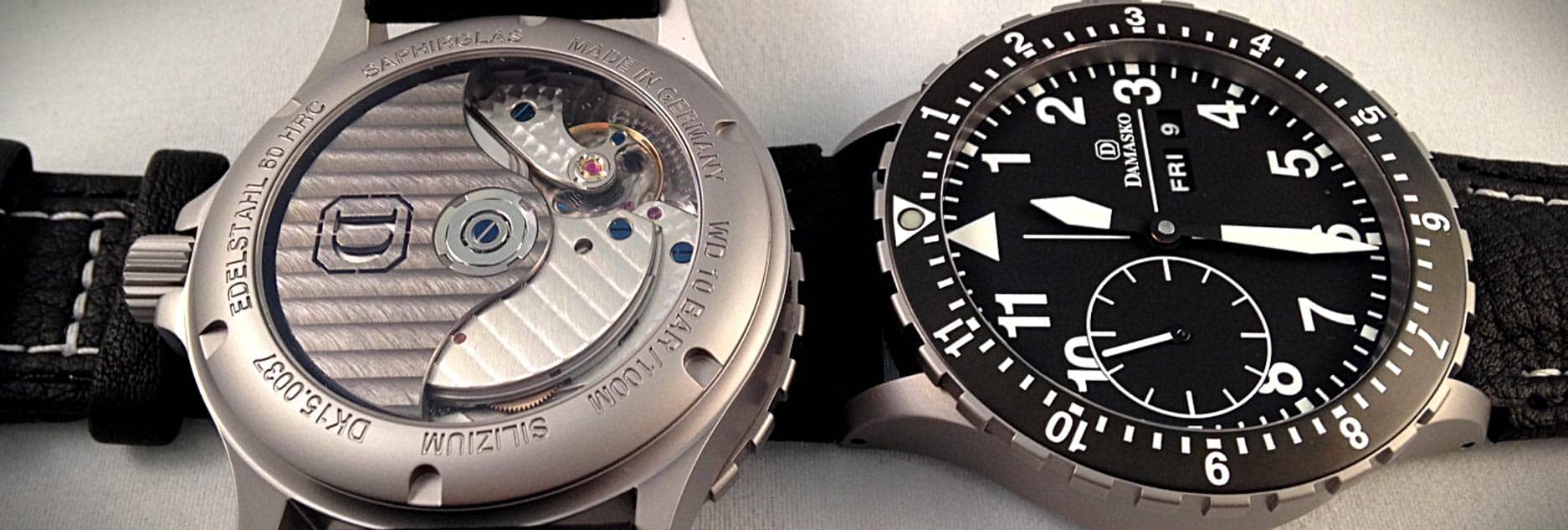
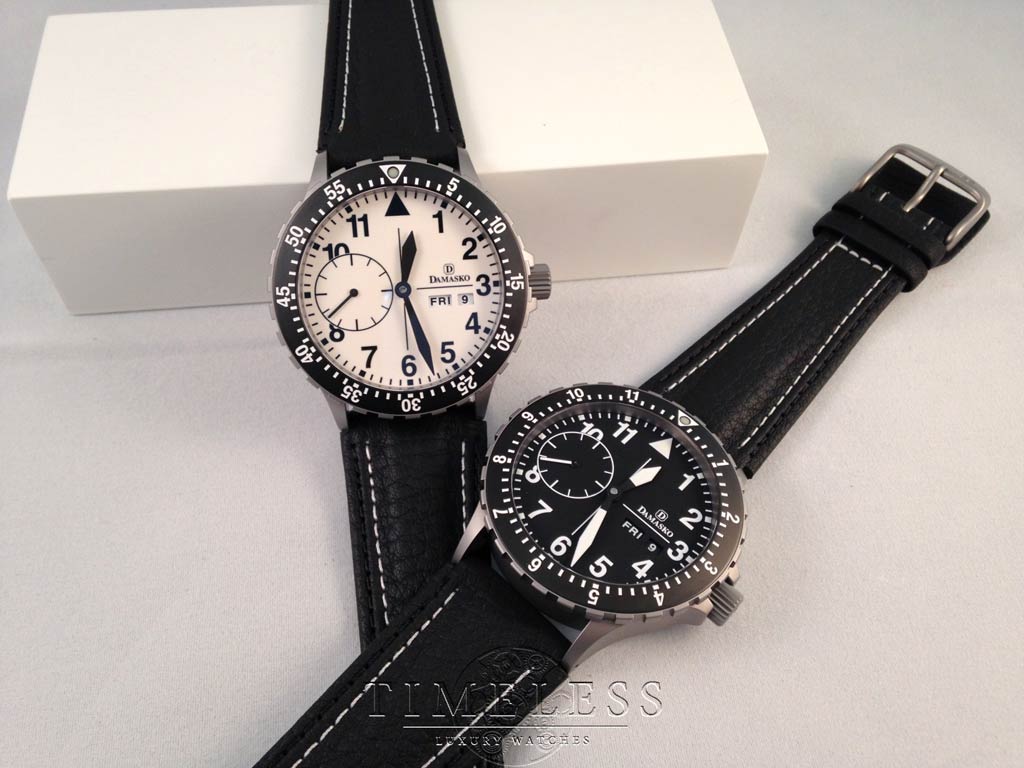
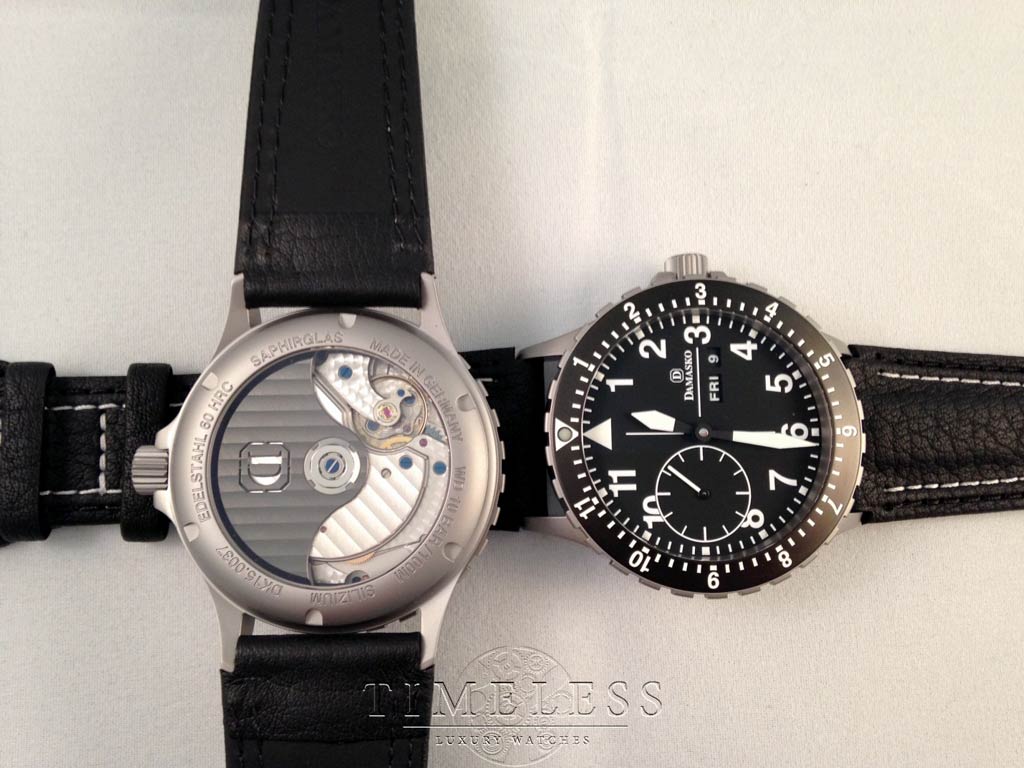
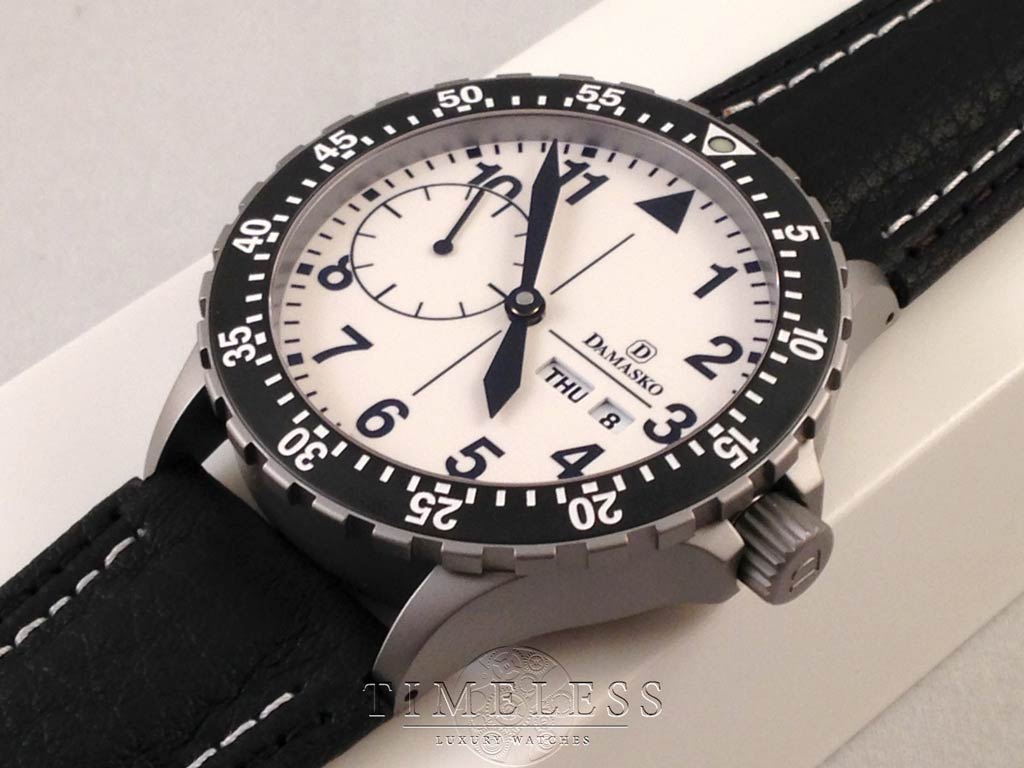
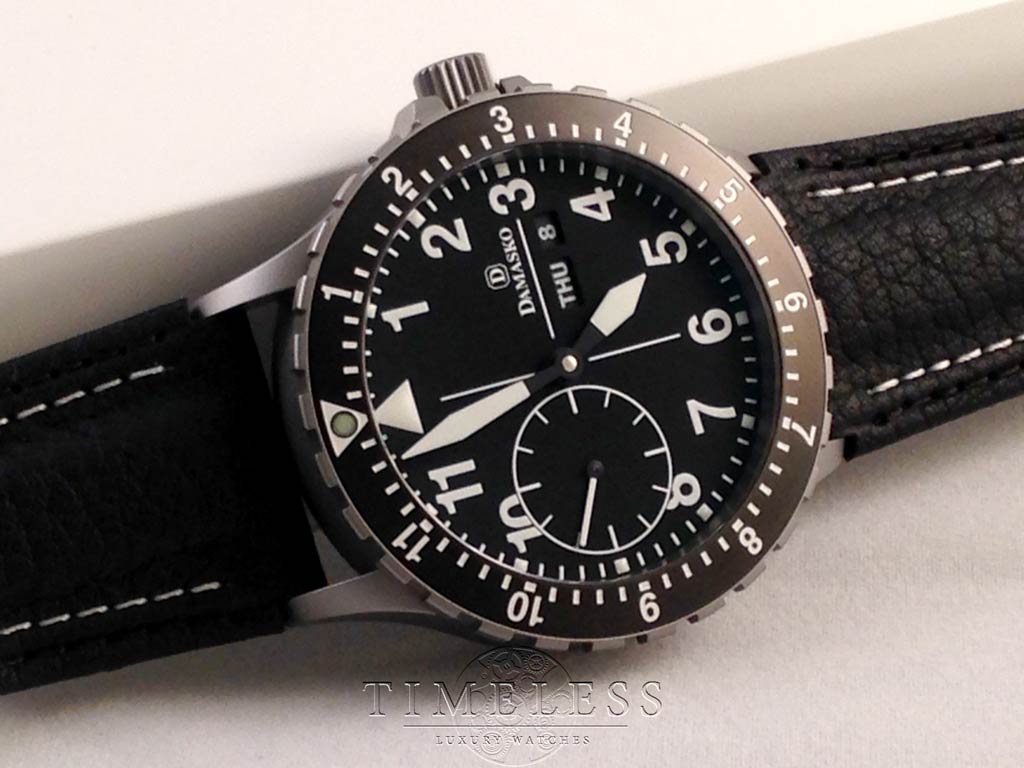
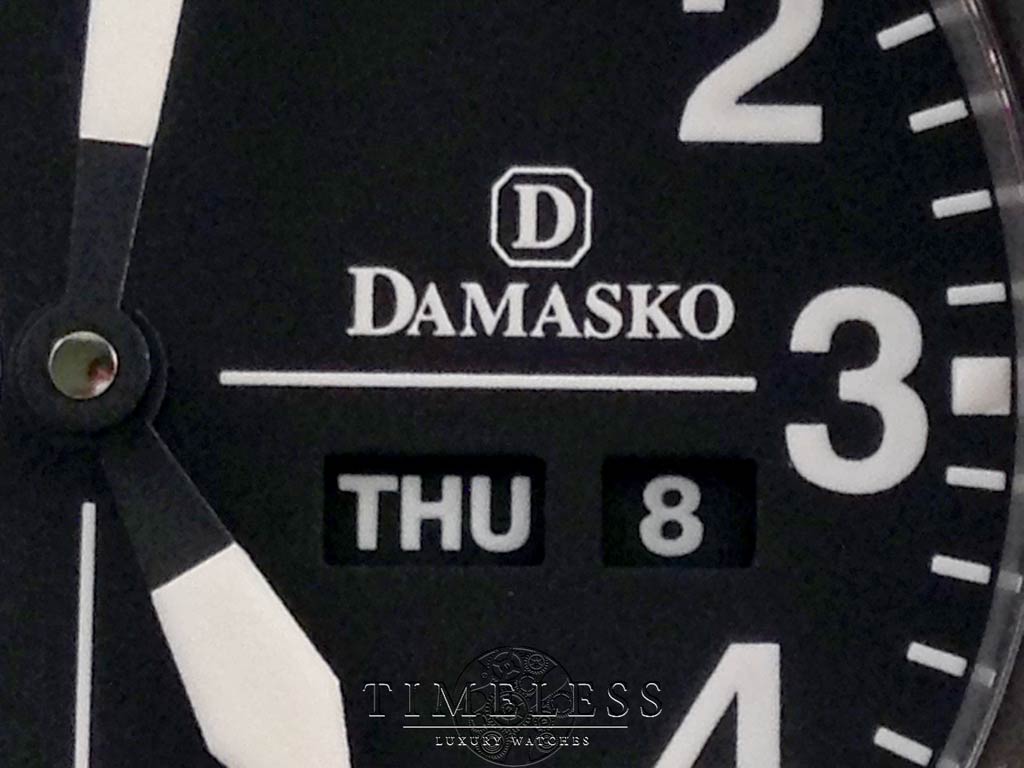
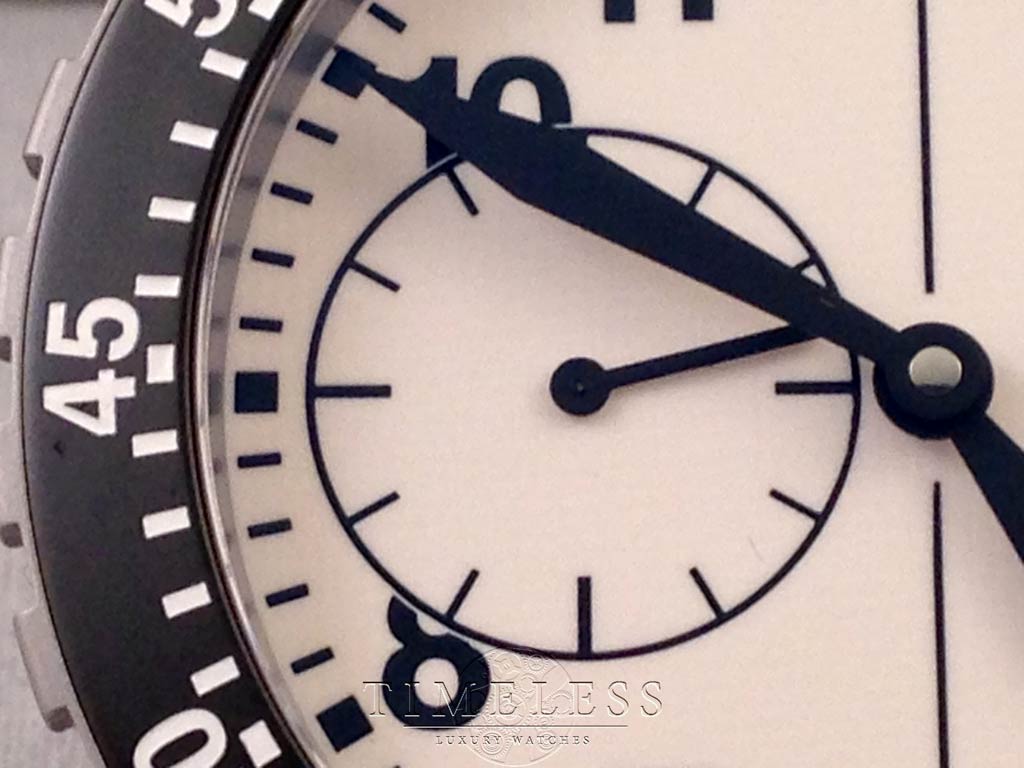
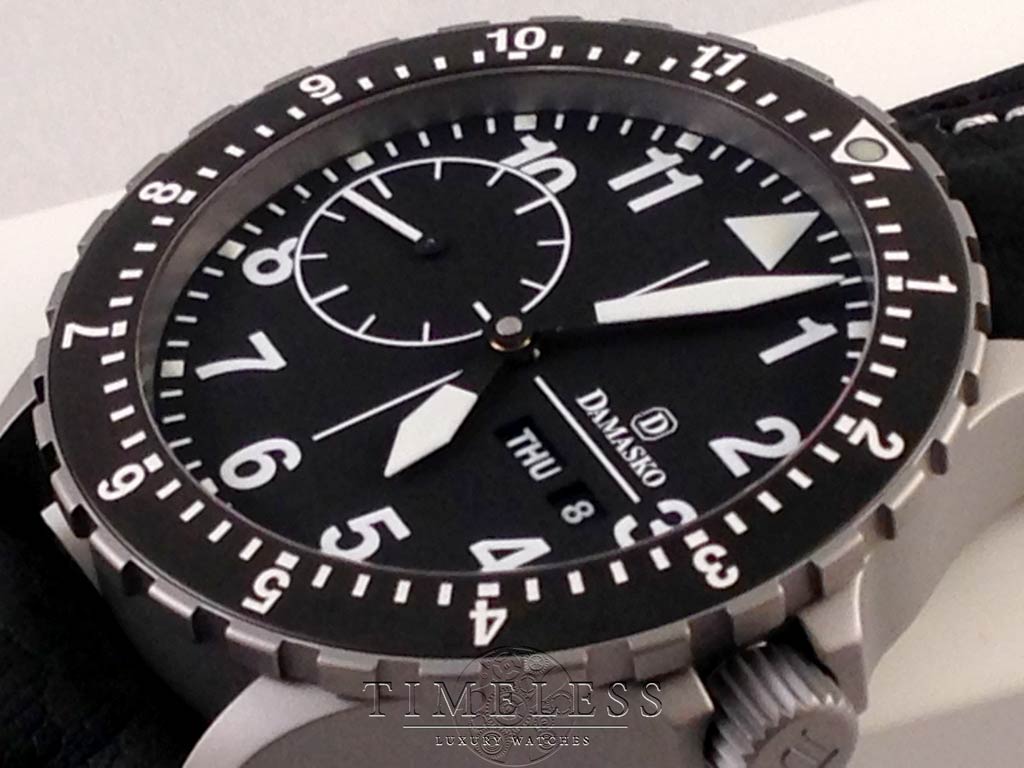

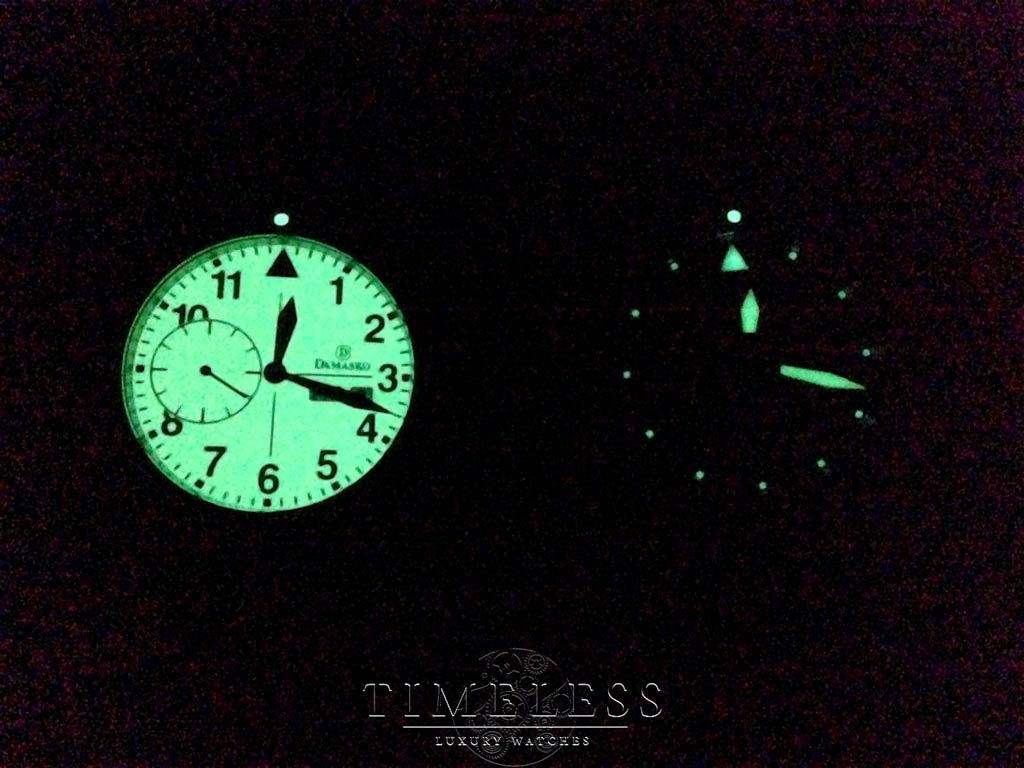

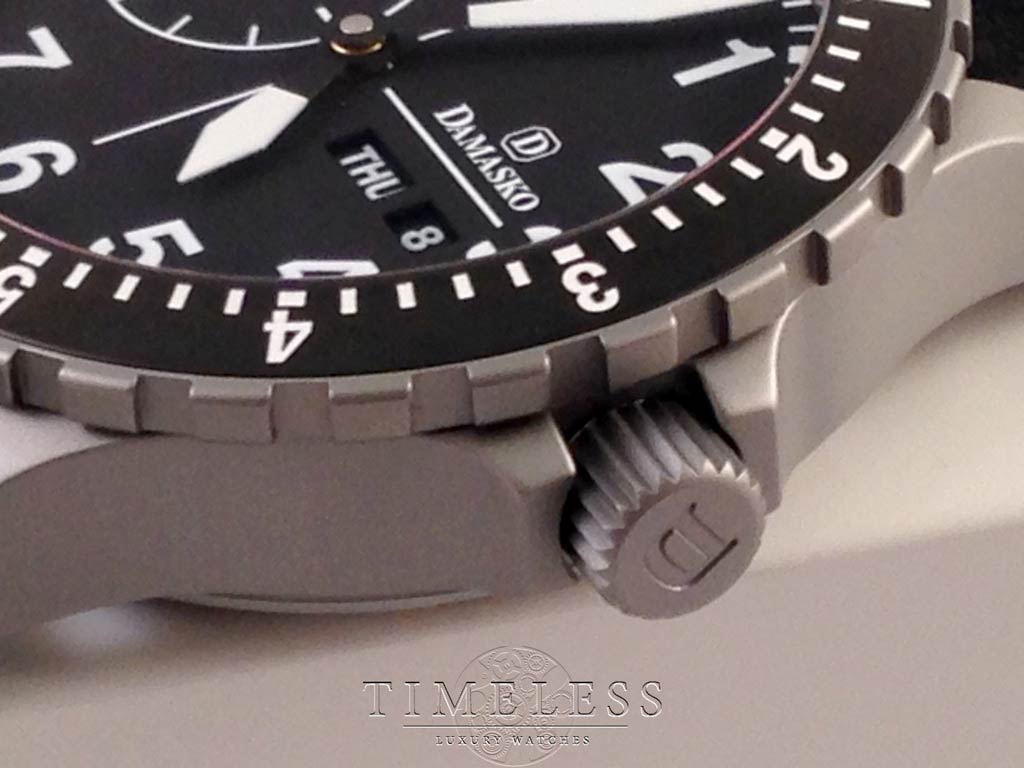
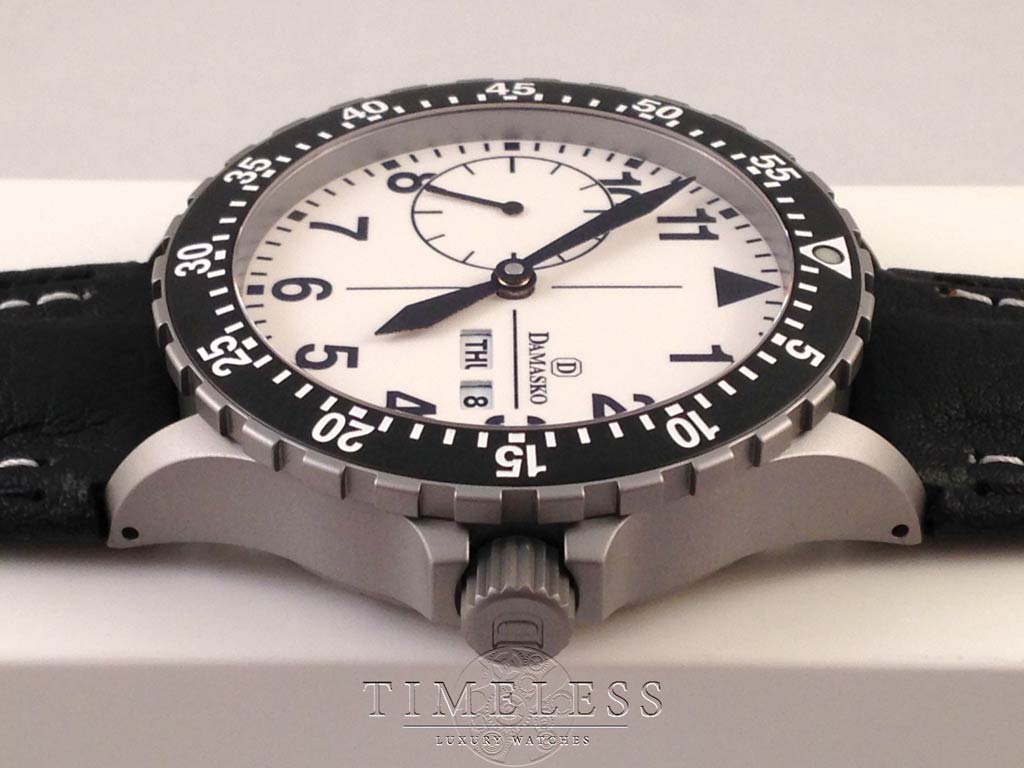
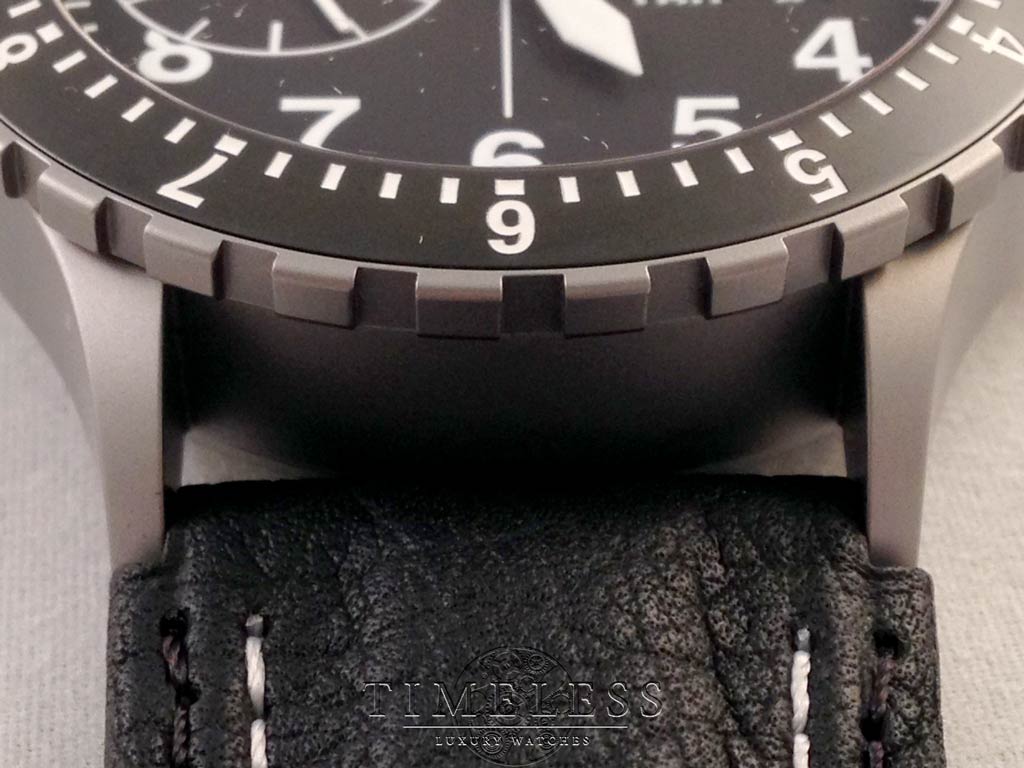
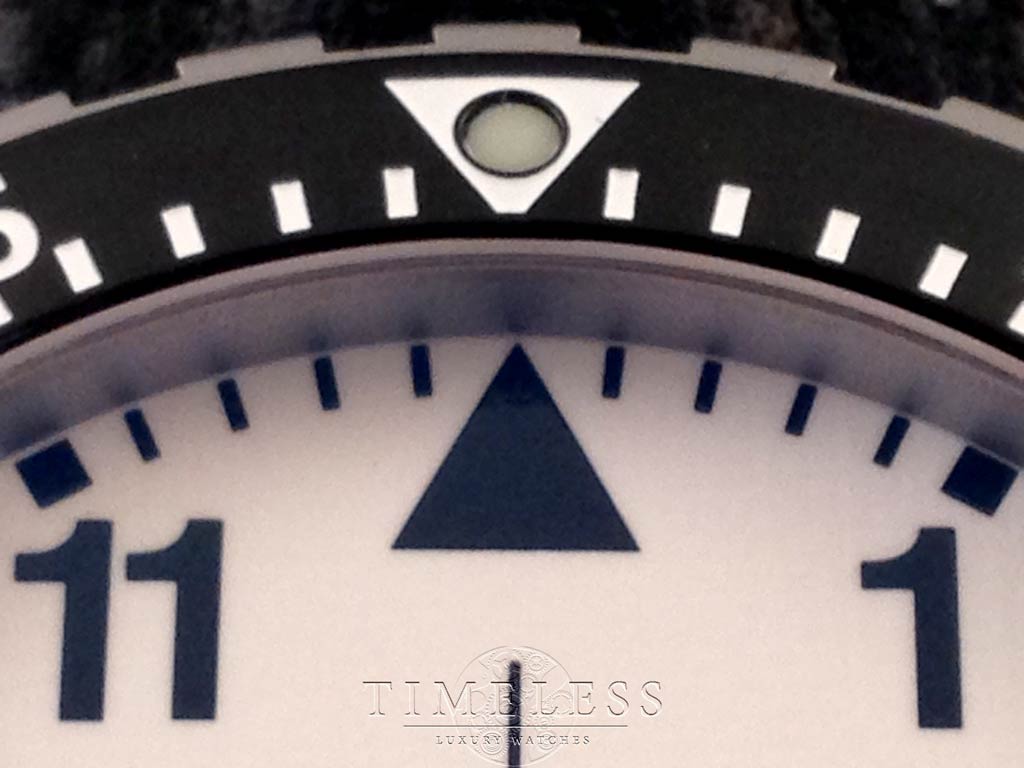
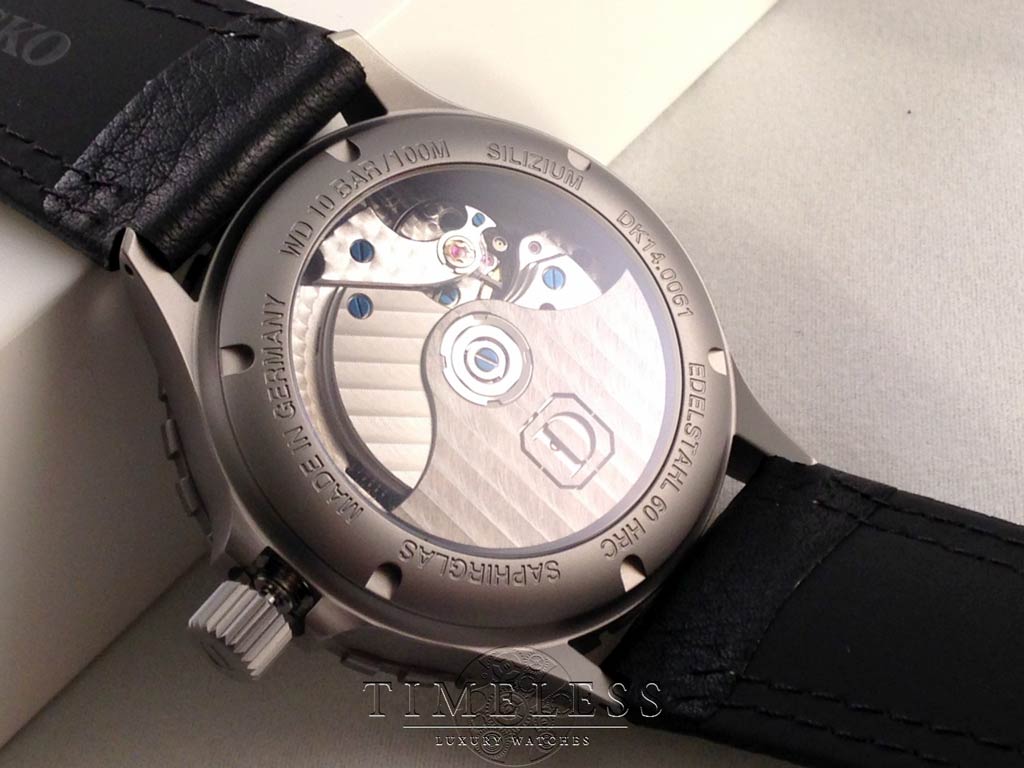

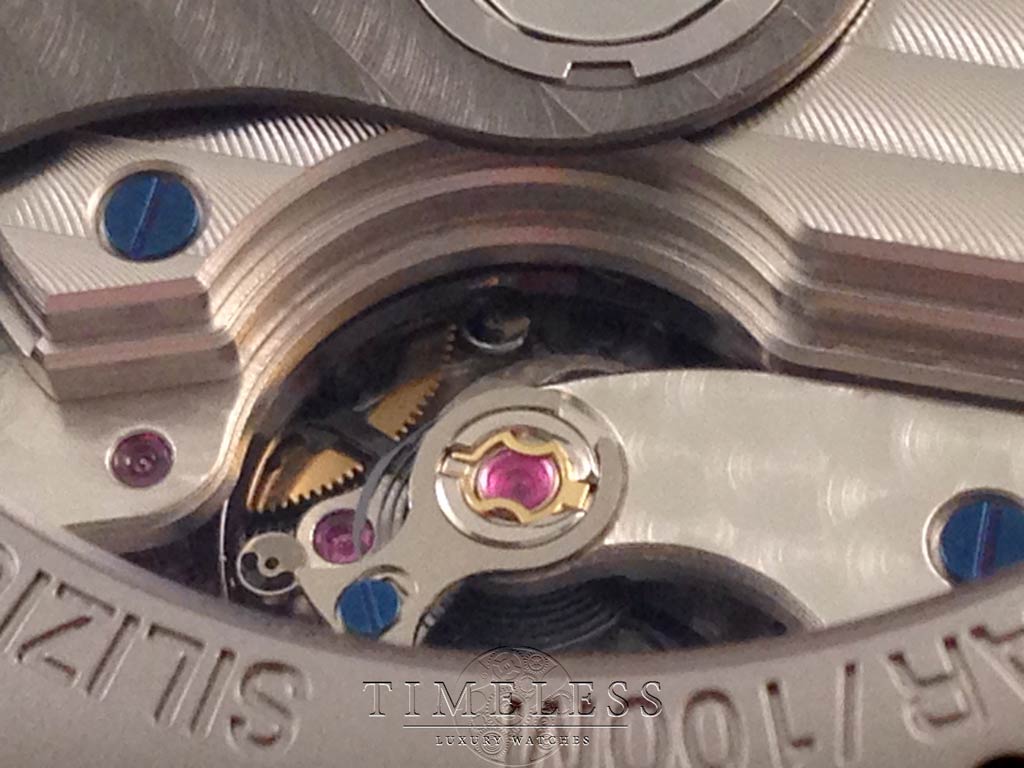
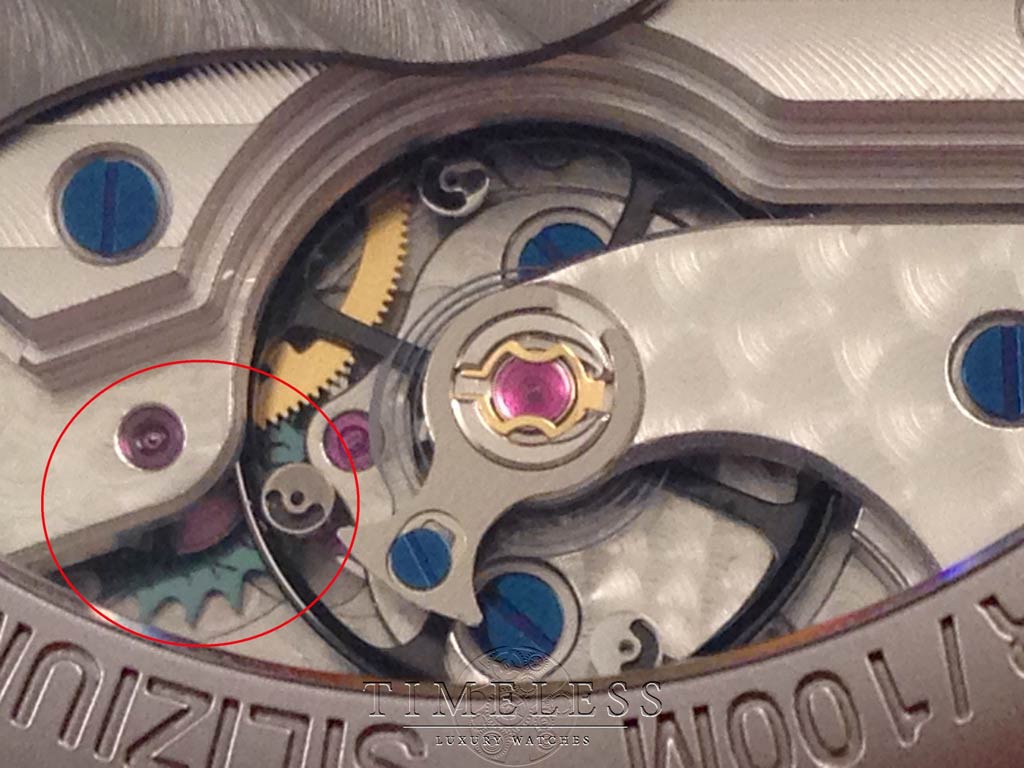
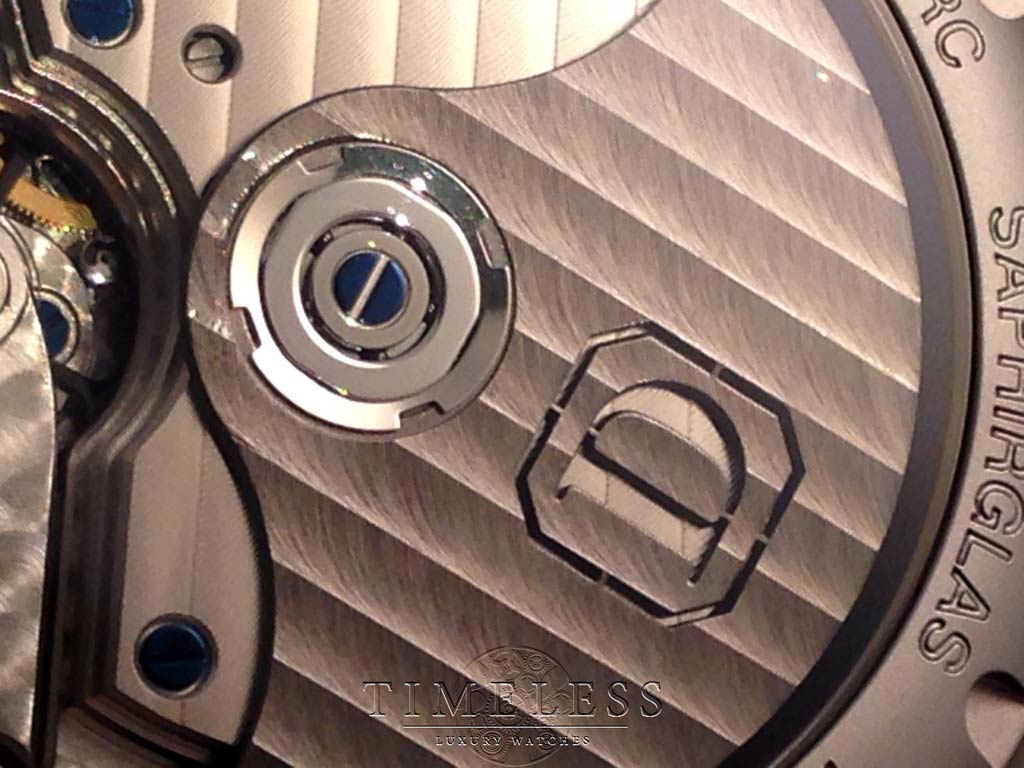
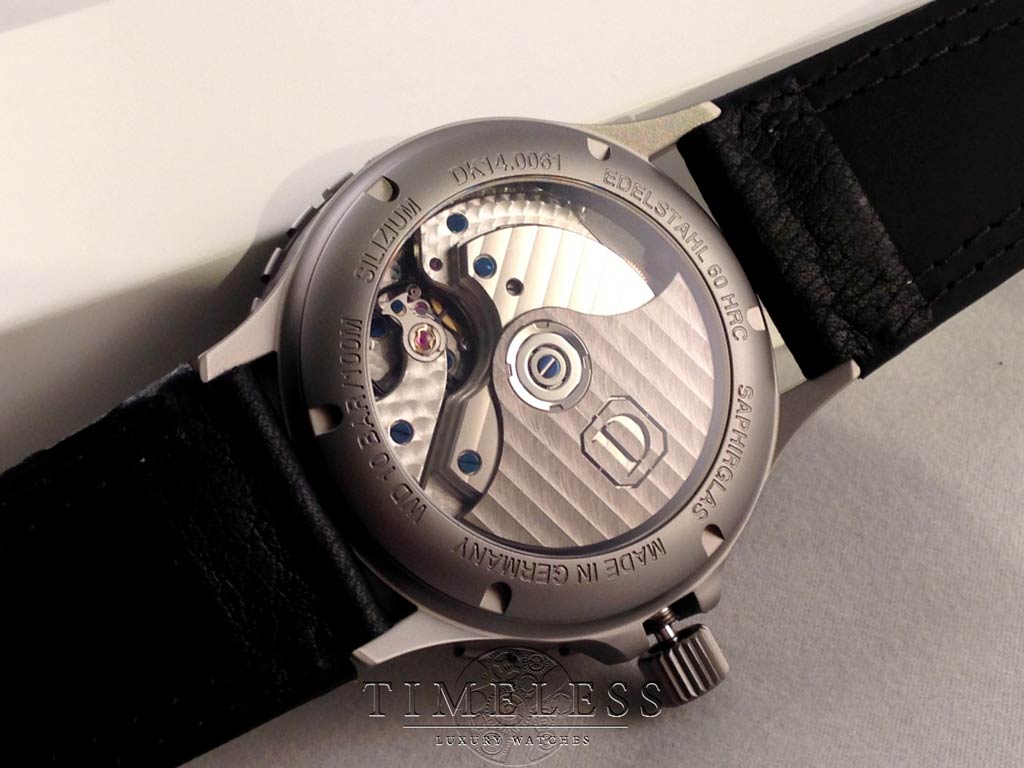

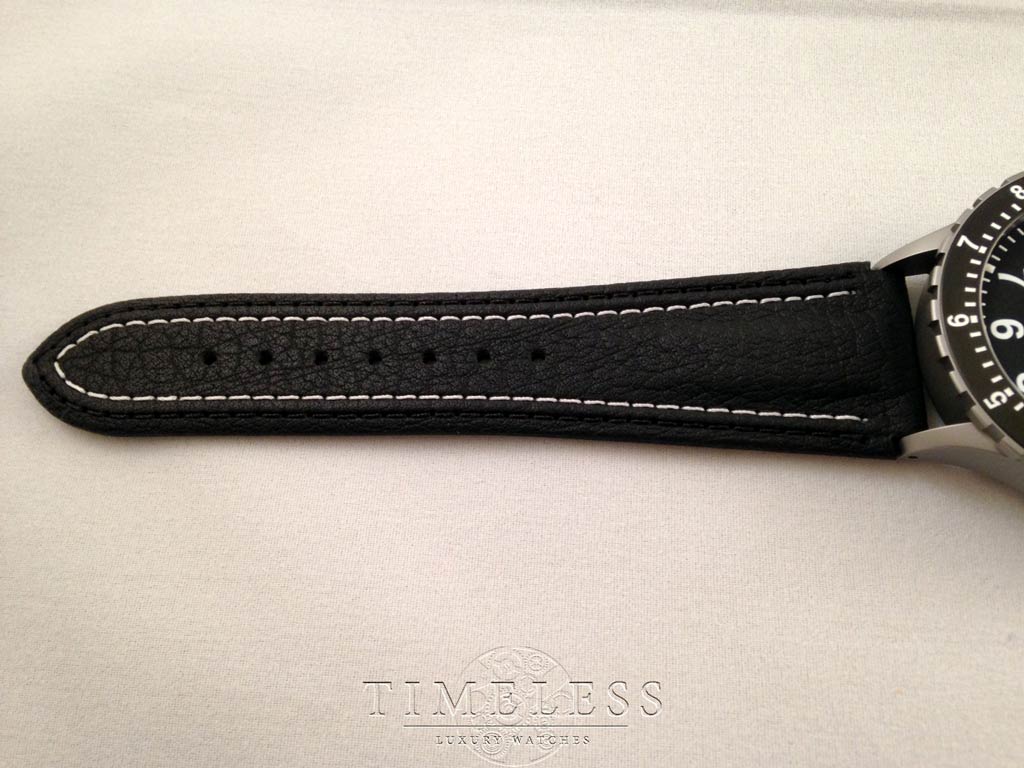

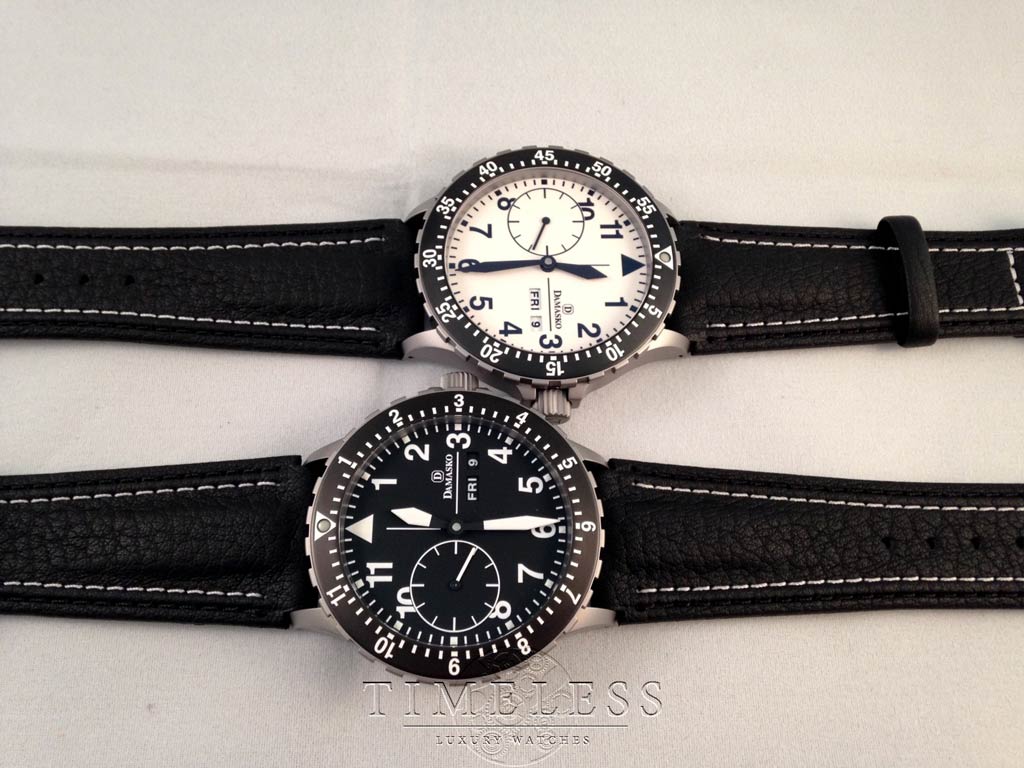
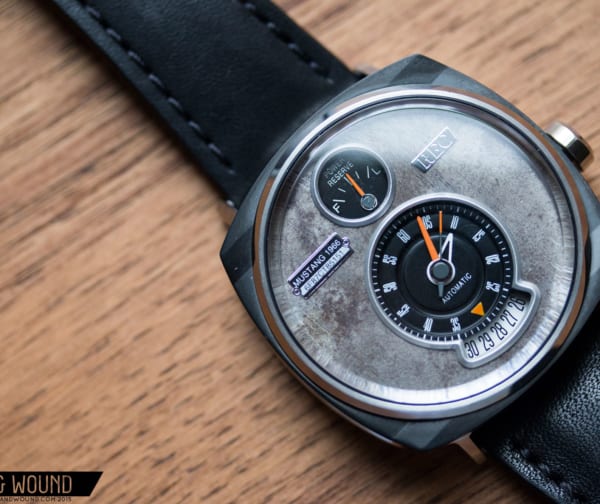
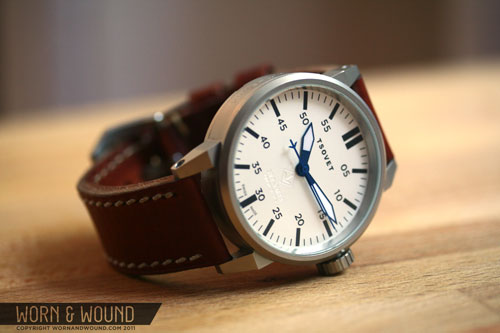

Awesome tool watch. Please do a video W&W.
There is so much to like about this watch.
Guess I’ll start saving my pennies now…
awesome watch; awesome review. thank you.
Umm this isn’t really a review, is it? It’s more like a full page ad.
I agree. Seems W&W is doing this a bit more as of late, and of watches previously in a price range W&W didn’t cover. Guess I may need to find a new affordable watch review site, if there is one?
Yeah, same thoughts here.
What ticks me off is that there’s no obvious disclaimer about
a) who actually wrote this (person/company), and
b) is this a sponsored post, or a paid advert, or a part of some marketing deal, or what.
It definitely doesn’t read like a reasonable review, and the editor’s note at the end is quite possibly the most flowery, veiled and vague disclaimer I’ve seen.
(And yeah.. I think this deserves being called out for what it is.. At least stick to a very simple rule of thumb – if something you host on your site isn’t a normal review, then put an honest, brief and *nonambiguous* disclaimer at the start of the post…)
Hey guys,
Sorry if this came off as something it is not. I’ve added an note to the beginning to be more transparent about the source of this article. It is merely a republishing of an article that was on WUS with the author’s consent. The author is a retailer, and I found their depth of exploration especially into the movement to be very interesting and worth sharing.
This is a watch that is very hard to get your hands on, so there are few articles out there that look at it in-depth, which is why a retailer really is the only person who has access. When I saw this article, I felt that it was worth sharing as the value of these watches, though not inexpensive, is exceptionally high. In-house caliber, in-house EPS hairspring, ice-hardened steel…it’s actually crazy that this costs under $5k.
anyways, I apologize again… I’ve learned my lesson and will be more clear about the source of articles such as this one in the future.
best,
Zach
Right, that’s a lot better. Thank you.
This is not the sort of watch I’d buy even if I had 5k lying around, but it was interesting read nevertheless. I appreciated it’s detail, despite the lack of neutrality. When are we going to see some more video reviews? Seems like it was ages since the last one.
Agreed bring back the video reviews!
In a word: WANT. I’ve had my eye on Damasko for awhile but haven’t been able to justify the expense. My favourite would be the DK11 as: I think central seconds are easier to read and thus a better match for a tool watch, I like the dash of red (seconds hand, bezel, strap stitching), and the full lume dial is an uncommon and practical feature.
Wow.
People can be a little harsh, no?
Yes the review has a lot of positives, but it IS informative about the engineering of a very well built watch. ‘May need to find a new…review site’…c’mon, give me a break.
Anyone with some logic and reason can discern fact from smoke blowing, and those without can research further on the internet.
This site, and zach, brings a lot of great information to the table…by choice. We, in turn, come here by choice. No need to rag him, in my opinion.
I think everyone has a bit of the right idea. Clearly Zach means no harm with this article, it just needed to be clarified regarding it’s purpose and source. He learned from his mistake, apologized, and I appreciate his candid nature regarding the issue.
One thing I think we all forget about is that while it’s easy to hit refresh waiting for the next video report or watch review, it not only takes a ton of work to run this type of site but most importantly, there’s only so much you can cover re: affordable watches. And while 5k for a timepiece is undoubtedly out of my own personal price range, it might very be the next step of “Affordable” for someone who’s perhaps receiving a bonus check, career advancement, wedding gift etc. I remember I used to think a $1k watch was a ridiculous amount of money to spend on a time piece but now it seems relatively normal.
All I’m saying is let’s give W&W the benefit of the doubt here and support someone who’s put together a great thing. I look forward to future posts and wish them all the best.
How about a real W&W review of the more affordable DA36? That one at least is something I might be able to save up for, maybe a year or two down the road. And it looks awesome.
I love Damsko’s tool watches and I like that they seem to make it a point to stay at a lower price point than Sinn. Weirdly, I’ve never owned one because of their logo. Always thought it could have been a lot nicer and tarnished the design of their dials. Hey I said weirdly lol.
I agree with Dave on the price range thing. IMHO what made W&W unique was coverage of unique and/or quality watches at a reasonable price. I own a few higher-end watches but I’m with Helmut Sinn when it comes to pricing and refuse to be a market victim and accept that 3-5k is a good “value” for any watch. If you buy them you have to admit to yourself that it has nothing to do with good “value”- you just want it and will pay the ridiculous mark-up.